Olight M21-X

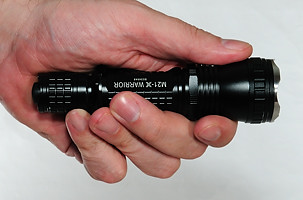
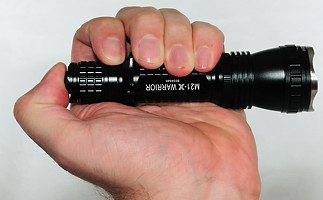
Olight is a well known company that has made many good flashlights from small AAA light up to larger spotlights (I have looked at a few of them: SR51, M31 and Mini Titanium AAA). This light is the high power version of the M20, it has just about the same size, but includes more cooling fins on the head. The light has 3 brightness settings and strobe, to change setting loosen and tighten the head. The light is made of aluminum with hard-anodized (Type 3) finish.
My review copy did not include anything, but the light.
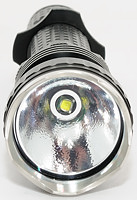
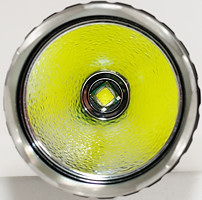

The light has a LOP (Light Orange peel) reflector with a XM-L led at the bottom. The bezel is in stainless steel.
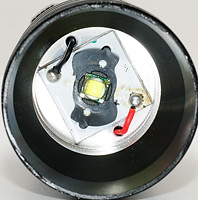
A closer look at the led.
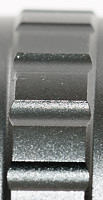
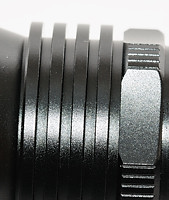
The head has some groves, they cannot be used for grip when changing level, but are used when disassembling the head. There is also the usual heatsink for high power lights (Heatsink and slightly larger head are the main difference between M20 and M21). The 6 faces behind the heatsink is just for design, they do not work as a antiroll device.
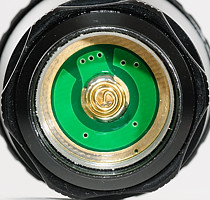
The battery connection in the head is a spring. The ring at the outside is used for level change.
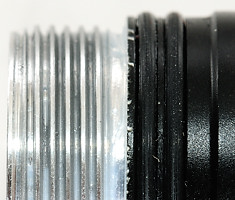
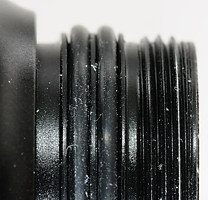
Both front thread are not anodized, but the back threads are, i.e. they the tailcap can be can be used for lockout. Both front and back threads has two o-rings for sealing.
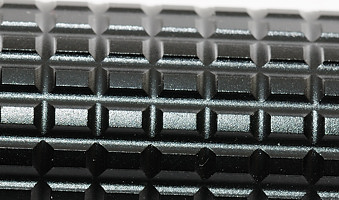
There is no knurling on the light, instead it has some square cut groves on the body.

The light has a removable clip.
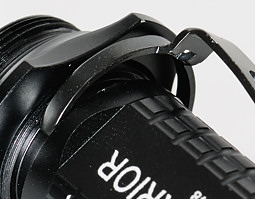
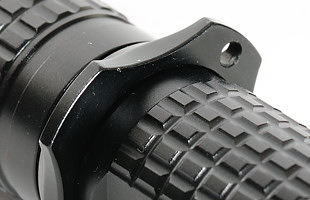
The tactical ring is used to lock the clip in place, loosen the ring a bit and the clip can be removed. To remove the ring the o-rings must first be remove, but this is not necessary for removing the clip. The ring also has a hole for lanyard.
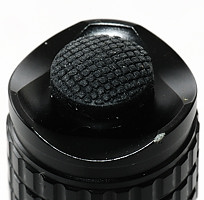
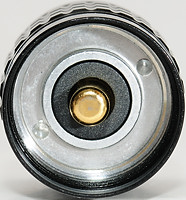
The tailcap has a protruding switch, i.e. it cannot tail stand. The switch is a forward switch, i.e. it is possible to momentary turn on the light by holding the switch halfway down. The switch does not change brightness, i.e. the light can be used for signaling. The tailcap has a spring with a cap on for the minus connection.
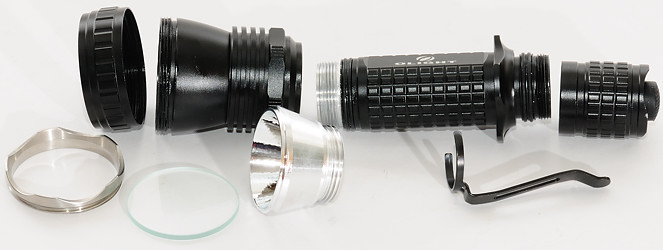
Here is all the part the light can be disassembled in without tools.
The M20 has long been a popular light, the M21 improves on it with higher light output, the first version with the SST-50 and this version with a XM-L led. The larger led does give a wider beam, but the output is high enough to also increase throw compared to the M20. This makes this light a nice step up from the M20.
Technical specification and measurements

The light can be used with a 18650 battery or 2xCR123 batteries.
Measured size and weight:
Length: 144 mm
Diameter: 24 mm to 40.2 mm
Weight: 156 gram with 2xCR123 and 170 gram with AW18650-26
The light uses a Cree XM-L led.

In the above table I have collected all modes, measured at 3.7 volt. All the estimated runtimes are with 2600mAh LiIon batteries. The estimated lumen is scale from the specified maximum. The brightness is a relative measurement from a lux meter.
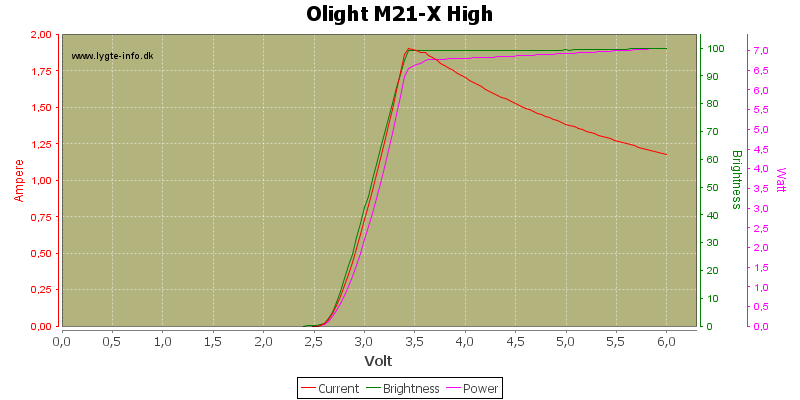
A voltage sweep at high shows a very good stabilization that works down to 3.4 volt where the light slowly fades in brightness. At 2.5 volt the light goes out. The light has a maximum current draw of about 1.8 ampere.
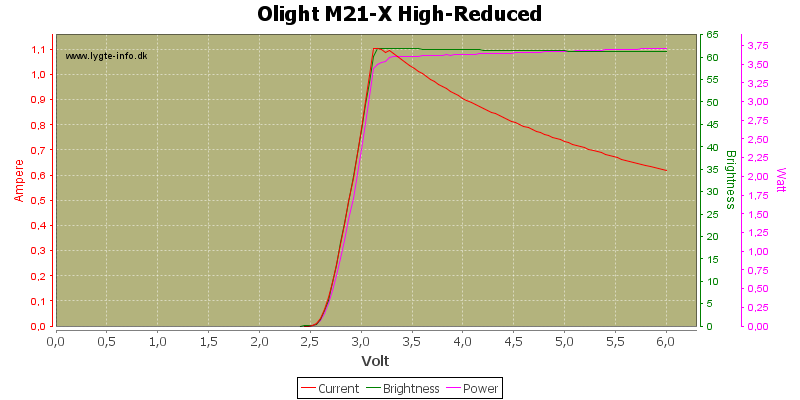
The reduced brightness also has good stabilization and workd down to 3.1 volt.
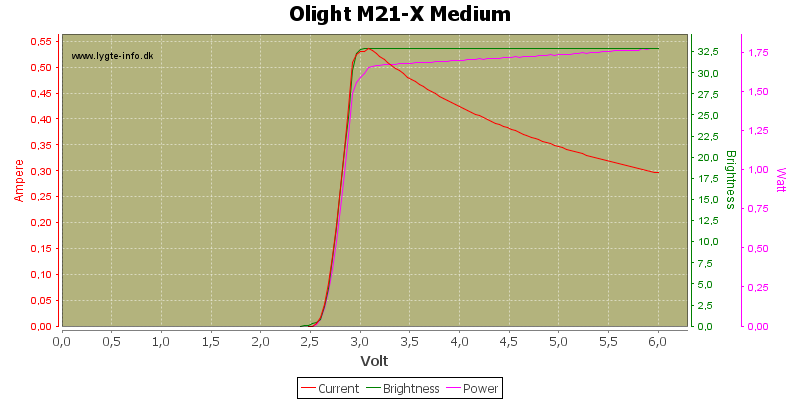
Again very good stabilization down to 3 volt.

The low does not look as perfect, but the stabilization is still good.
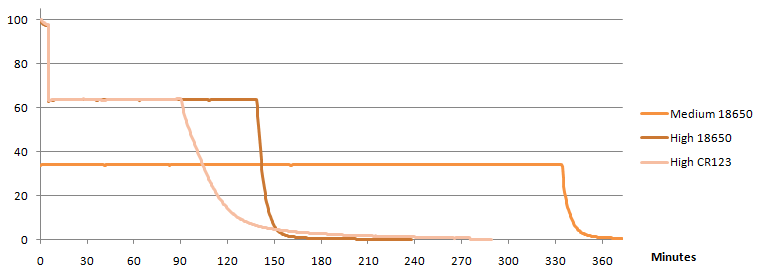
The good stabilization from the voltage sweeps, does give a very flat runtime, until the batteries are nearly drained. Because the brightness and current draw drops at about 3 volt, the light does not trigger the protection in the cell, but instead goes to a very low brightness (eventually it will trigger the protection, if not turned off).
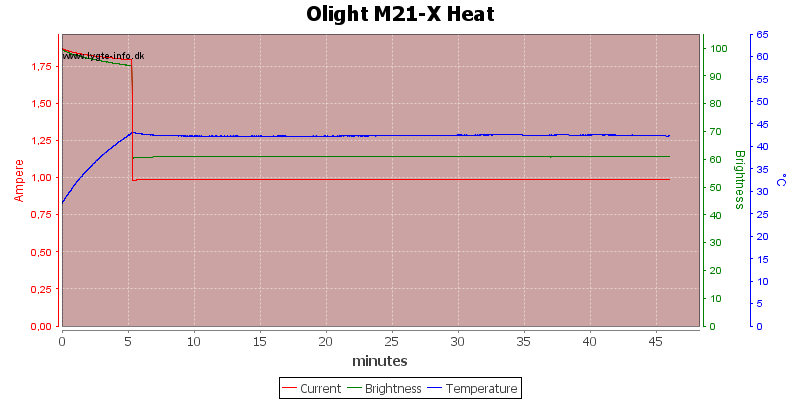
I did a temperature test to see how well the light handles the heat from the led. The temperature rises when at full brightness, but after the 5 minute stepdown the temperature will drop again. With increased temperature the current to the led and the brightness drops.
Note: My test does not simulate actual usage conditions, but are done on a test bench with only the head of the light and no cooling airflow, i.e. the light will get hotter than during normal use.

Strobe is 9.8 hz with 45% duty cycle.

The light output on medium has some noise in it, but at a very fast frequency and low amplitude, i.e. totally invisible.
Comparison to other Flashlights
Olight M20S S2, M20 XML-U module in M20 Titanium body, Olight M21-X:
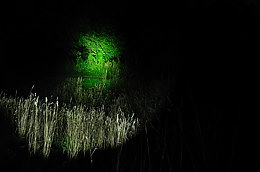
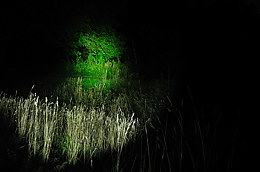
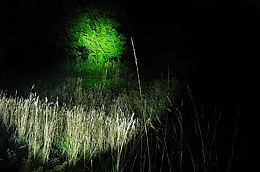
Olight SR51, Fenix TK21, Fenix TK35:
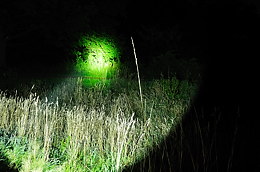

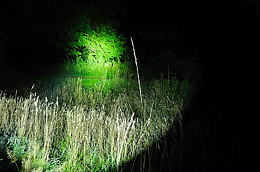
For the full comparison to other lights with graphs and beamshots see here
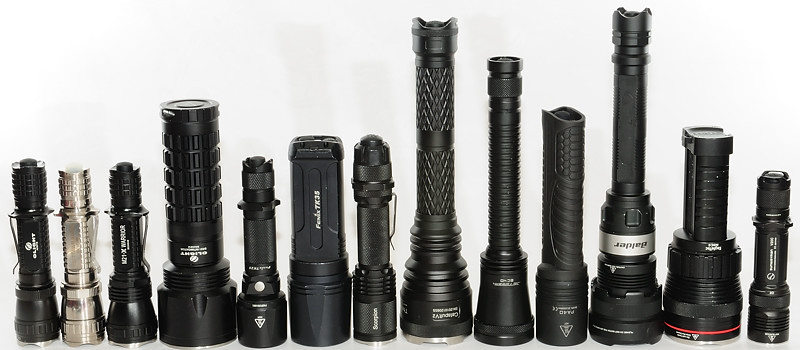
Notes
The light was supplied by 4Sevens for review.



































